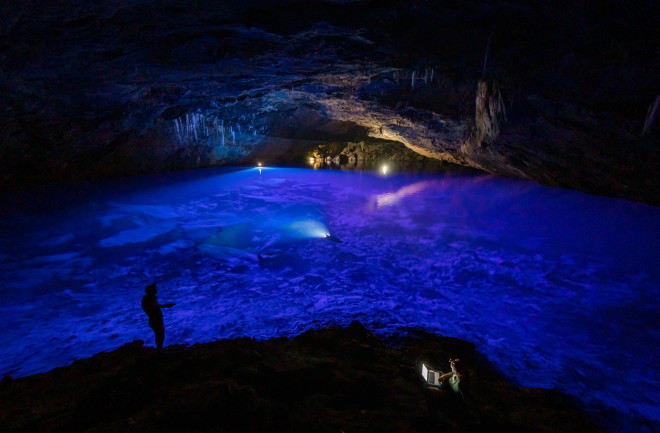In the spring of 2017, explorer and robotics systems designer Vickie Siegel was navigating a mist-soaked cave in southern Mexico when she slipped, tearing a tendon in her knee. After a grueling self-rescue, aided by her teammates, Siegel flew back to the U.S. for surgery. It was during this recovery period that she first heard about Dragon’s Breath Cave — a sprawling, water-filled cavern buried beneath the sands of the Kalahari Desert in Africa.
“I came across this [documentary] series on Africa, and they do a really short segment on Dragon’s Breath,” she explains. “It just captivated me … It was this amazing juxtaposition of desert and vast amounts of water.” Though some of the world's leading cave divers have attempted to plumb the cave's depths, they've been unable to fully explore the extent of the cave's vast interior.
Two years later, Siegel, along with a team of robotics engineers and divers, arrived in Namibia to see Dragon’s Breath for herself. But the human explorers wouldn't be alone on their expedition — they had brought along an AI-controlled underwater drone to map the cavern’s contours, as well as two other deep cave-diving sites in Namibia.
And with the drone’s help, the team was able to explore these waterlogged caves much farther, and much deeper, than any human diver before them.







